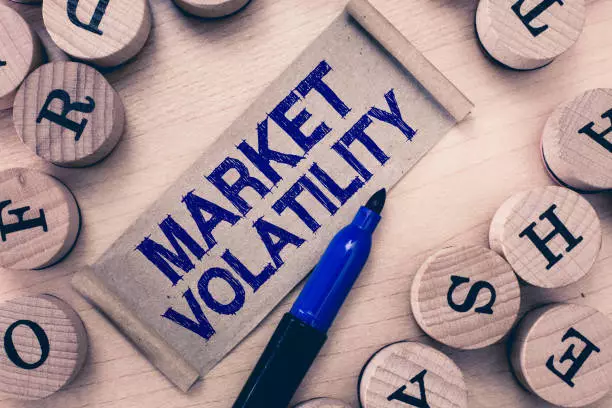The stock market is often a complex reflection of myriad factors, from corporate earnings to geopolitical events. Recently, the U.S. stock indices experienced significant fluctuations influenced by a blend of corporate disappointments, renewed trade war rhetoric, and the looming specter of the upcoming presidential elections. As the major indices grapple with these pressures, investors are left to navigate a landscape rife with uncertainties. In examining the implications of these elements, one could argue that understanding the broader economic context is essential for anticipating market movements and potential corrections.
The Impact of Political Rhetoric
Recent statements by Republican presidential nominee Donald Trump have rekindled fears surrounding trade tensions between the U.S. and China. Trump’s comments, where he referred to tariffs as “the most beautiful word in the dictionary,” indicate a potential shift toward more aggressive trade policies if he were to maintain his position post-election. This resurgence of trade discourse has unsettled investors, particularly in light of historical data that connects political instability to market volatility. The relationship between political rhetoric and economic performance cannot be underestimated, as it has a pronounced impact on investor sentiment.
With the election only a few weeks away, the tension in the markets is palpable. Betting markets suggest that Trump leads his opponent, Vice President Harris, with a 56% probability of winning. This political edge, however, does not negate the possibility of market instability as uncertainties mount and election day approaches, pushing many investors into a defensive posture.
Another significant contributor to the recent market downturn can be traced back to disappointing earnings guidance from key technology companies. Specifically, ASML, a central player in semiconductor manufacturing, downgraded its revenue projections for 2025, resulting in a staggering 16% decline in its stock price, marking its worst single-day drop in over two decades. The ripple effects were immediate, hitting the broader indices, especially impacting large-cap stocks like Nvidia, whose sizable 4.68% drop contributed to a 0.75% decline in the S&P 500—its most significant dip in two weeks.
The technology sector has been notorious for its volatility, and significant players like ASML and Nvidia hold substantial sway over market performance due to their high market capitalizations. As they struggle with operational challenges and external pressures, the implications unfold in the form of broad market sell-offs, heightening investor concerns about a potential tech bubble.
Volatility indices, notably the VIX, serve as critical indicators of market sentiment, especially during tumultuous periods like election season. Historically, implied volatility surges leading up to U.S. elections, with October being particularly notorious for spikes. The VIX is currently lower than expected; however, analysis suggests that upcoming political events and economic uncertainties could lead to an abrupt shift. Given past elections since 1992, the VIX has averaged a high of approximately 25.97 in October, which indicates a potential for increased market volatility in the near future.
In tandem with the VIX, the MOVE Index— which measures the expected volatility in U.S. Treasury futures—has shown a significant upward movement. This correlation between market indices suggests a broader pattern of uncertainty plaguing financial markets, as rising volatility can often signal increased risk aversion among investors.
Technical Indicators and Market Trends
Looking at technical analysis, the S&P 500 has exhibited signs of fatigue in the wake of an ongoing bull run. The index’s recent formation of an “ascending wedge” pattern, combined with bearish divergences indicated by the MACD, suggests that upward momentum may be waning. Behavioral analysts scrutinize key resistance and support levels, with the current pivotal resistance pegged at 5,930. A breakdown below 5,675— the 50-day moving average— could initiate a corrective phase that might draw investors’ attention to lower support levels around 5,390 and 5,100.
On the flip side, an overnight close above the resistance could negate the bearish signals, providing the market with the opportunity to continue its uptrend toward significant resistance points at 6,110 and 6,390.
As October unfolds, investors face a store of challenges characterized by political uncertainty, corporate performance concerns, and volatile market indices. It’s crucial to maintain a balanced perspective in these tumultuous times, leveraging both fundamental data and technical indicators to make informed decisions. The convergence of these factors creates an intricate tapestry of market dynamics that will require keen observation and swift adaptability as we approach the pivotal November elections and beyond. Ultimately, investors who manage to navigate these unpredictable waters may not only survive but potentially thrive in the face of adversity.

